|
I've had a 19-degree crossover for 40 years, which allows a crossover between tracks when using No. 6 switches. I also had a 3-way AHM switch that old, and it has always worked well. Now they are all in use here. |
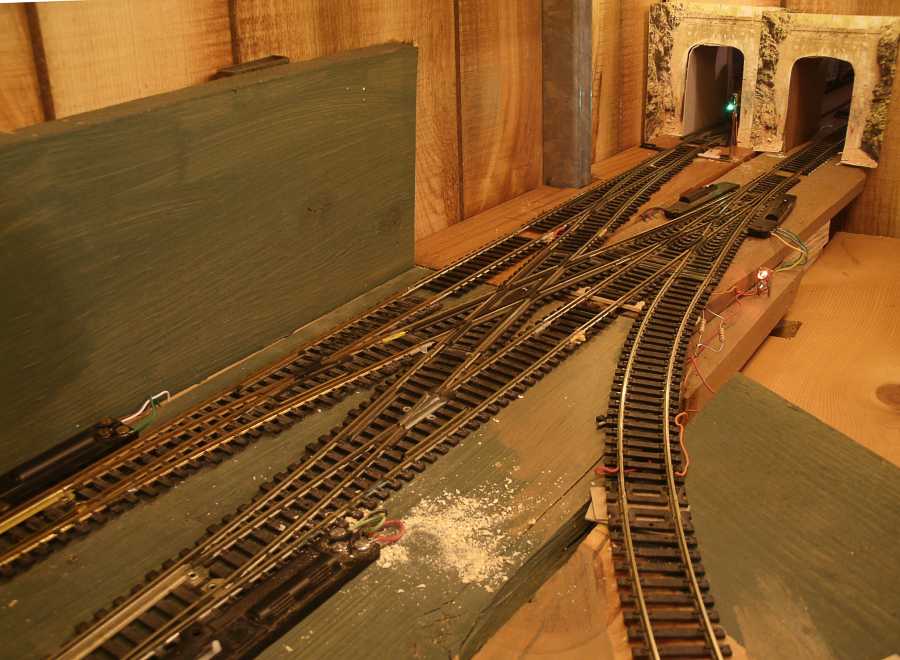
|
this crossover isn't so much for an actual crossover using the diamond every time, it's a space saving way to cram all this track in this limited space, there's no other room between the downhill and uphill grades between here and the tunnels to get a double crossover here. |
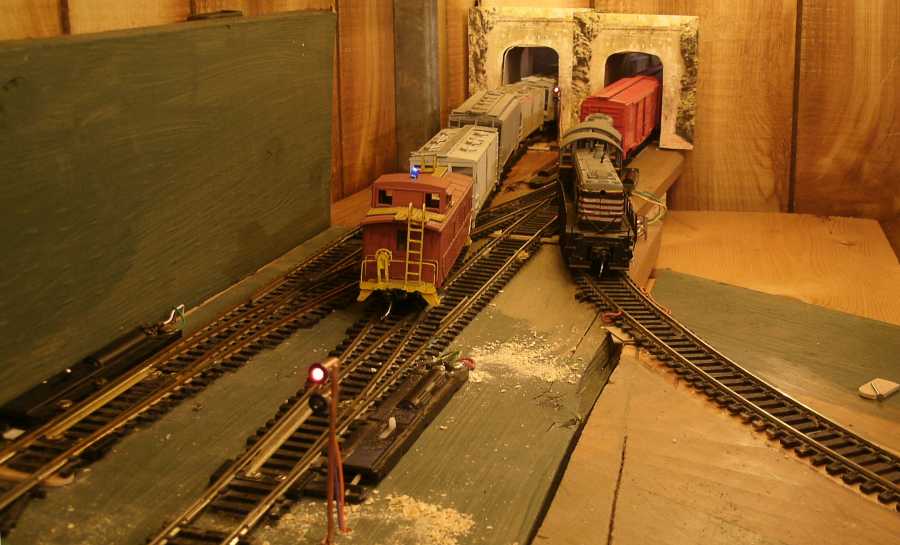
.
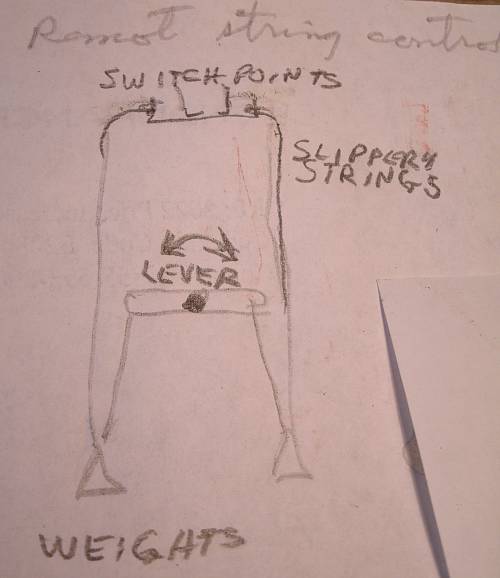 The switch on the upper left of the picture needed to be a 'spring switch', but really more of a 'combing switch'
The switch on the upper left of the picture needed to be a 'spring switch', but really more of a 'combing switch'
so a train moving on the left or crossing over to the left can automatically pass into the tunnel without my attention.
That switch has 'free floating' points.
Here's my sketch of a switch control that I saw 40 years ago in Model Railroad magazine.
Slippery Nylon fishline is tied to each end of the throwbar.
and run down through holes in the wood.
Small weights are below the board. Lifting one makes slack in that fishline,
and then the other weight pulls the points over.
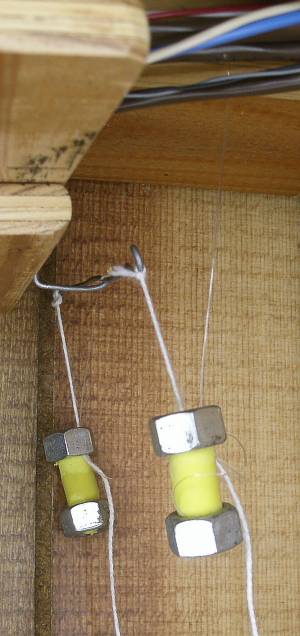 If both weights are 'lifted' and the fishline is slack on both sides,
If both weights are 'lifted' and the fishline is slack on both sides,
then the points can float back and forth as a train passes on either route.
Better than a spring switch, which is sometimes too strong.
And if the trains are run in the opposite direction, facing the points, then I lock it to just one position
.
.
.
I have a wire 'crank' under the switch, and the other end is 3 feet away where I can reach it.
Left, right, or middle where both lines are slack and the switch points can be 'combed'.
That whole mess of track is 3 feet away from an aisle, and I can only reach it by crawlling under the benchwork
and popping up a small access area.
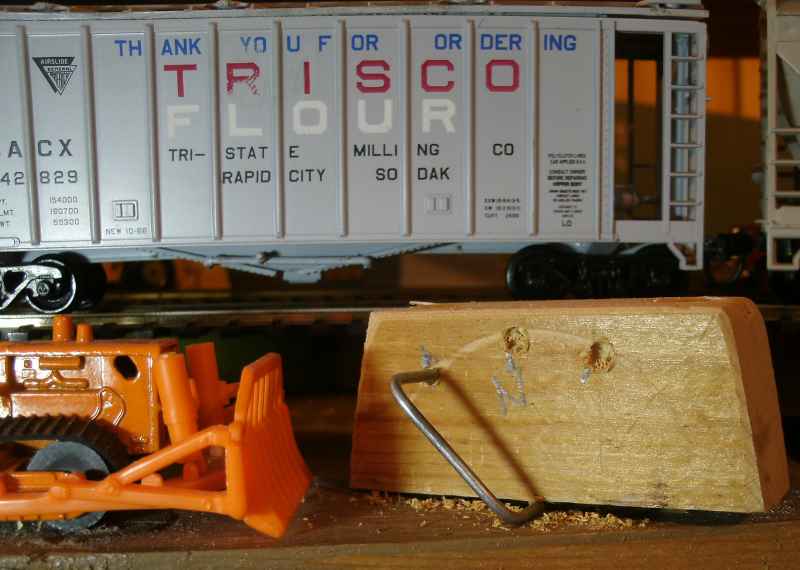
| this is an old track plan of the area through and around the divider wall of the basement. |
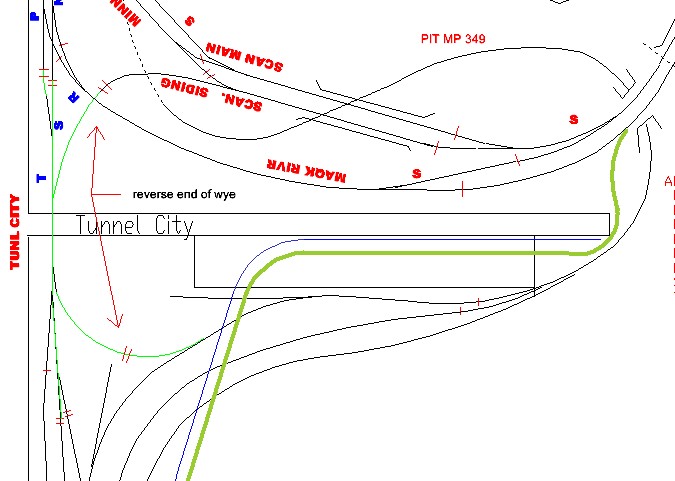
|
Below, the track plan is updated, with the new crossover on the left where the tracks go through the tunnels. The new crossover makes for convenient operation of two or 3 trains looping around the whole railroad, going the same direction. There was no more more room by the original tunnel switch labelled T to add any more crossovers. And all the track by T is part of a sectional control reversing loop auxiliary circuit. Sometimes I want to be lazy and not have to throw turnout T and set the Aux switch and reverse the main, which will reverse the direction of the other trains on the whole layout, which I don't want to happen. By setting T for the curve and the 3-way for the curve, the train curves into the reversing block and and leaves the reversing block without needing to change the Main direction switch. So, I can run 2 or three trains using one big throttle and not mess with throwing a lot of turnouts and electrical switches and the trains run a longer route without extra effort. Also, this is another place where trains may look like they are going opposite directions (electrically) but that's just an illusion of a dogbone inside of a circular loop track plan. |
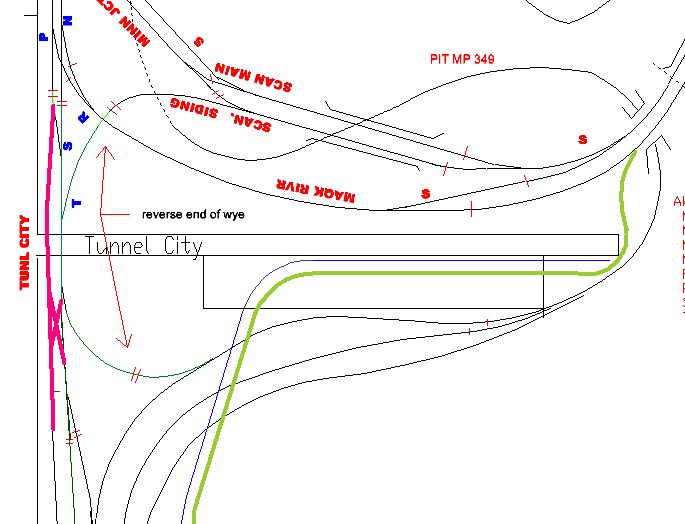
|
I have one problem with the new train routing scheme. If one train is coming downhill on the left, and another is coming uphill on the right using the cross over, and traveling the same direction. They can't both use the left track at the same time, obviously. And I have no automatic controls to prevent or warn me if I have done something dumb. Here, the downhill train has plowed into the uphill train and pushed just one car over. And even more interesting is just of out view through the tunnel are the two locomotives of the uphill train, coupled all together by themselves to make a 4-unit lash-up. |
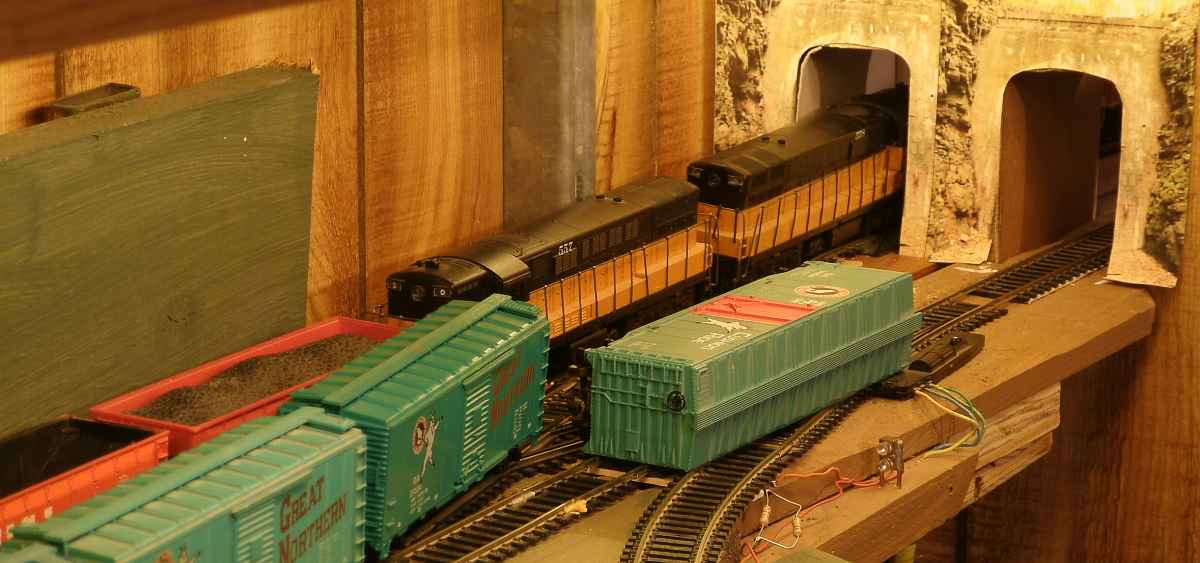
|
And there's another problem with my operating plan, which is also not protected by automatic control. On the other side of the tunnels, the wye crosses over a mainline. This would be easier to watch if these bottlenecks would be in the same room, but they aren't. I need someone to man that tower for 24-hours a day. |
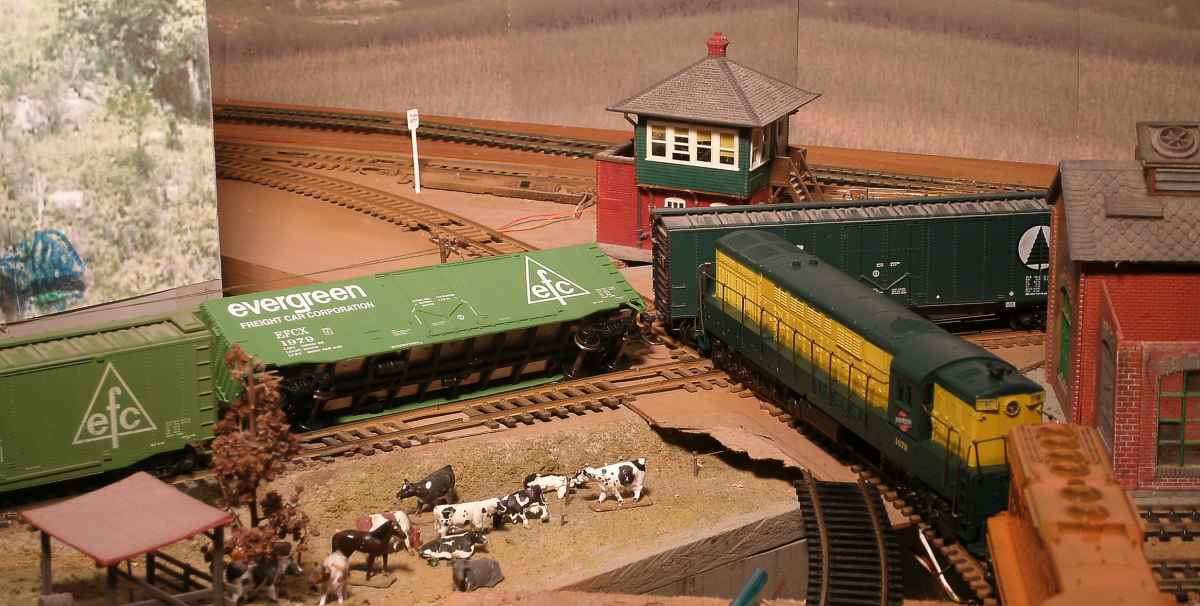
to My Main Index Page on the TrainWeb site.
This page and track work was made in April and May of 2023